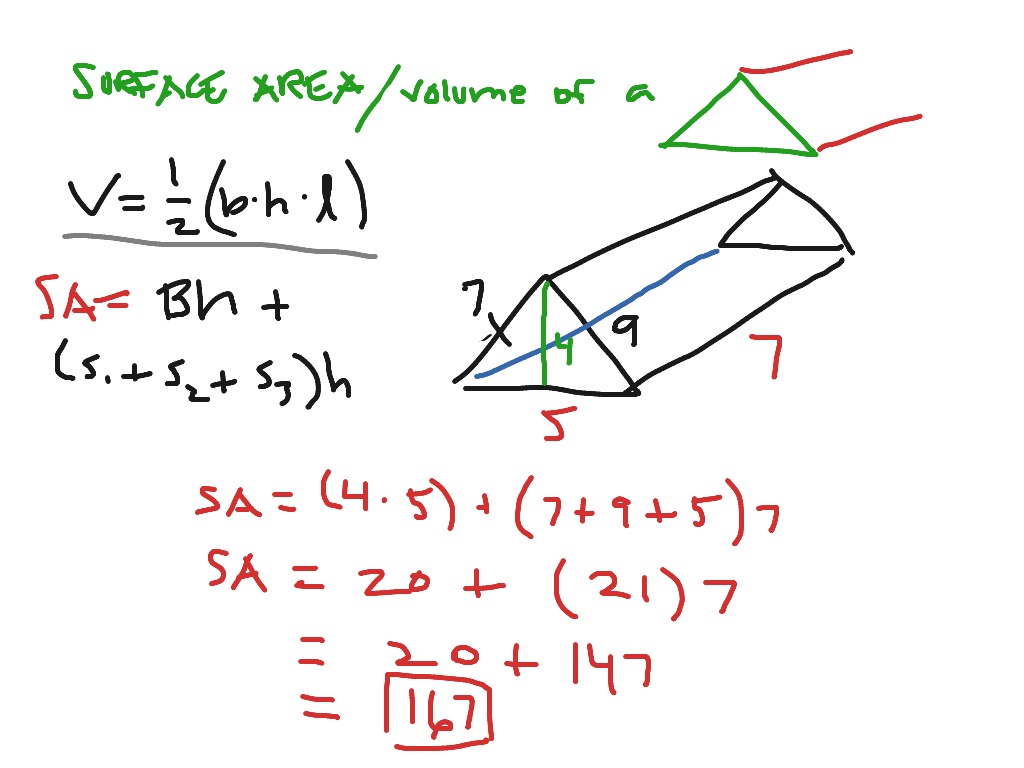

Let $V_A$ be the volume of the truncated triangular prism over right-triangular base $\triangle BCD$ likewise, $V_B$, $V_C$, $V_D$. So, let's explore the subdivided prism scenario:Īs above, our base $\square ABCD$ has side $s$, and the depths to the vertices are $a$, $b$, $c$, $d$. They are further classified as: Triangular Prism: A prism whose bases are triangle in shape is considered a triangular prism.

Volume calculations and therefore also formulae have a. Examples of volume formulae applications. OP comments below that the top isn't necessarily flat, and notes elsewhere that only an approximation is expected. The volume formula for a triangular prism is (height x base x length) / 2, as seen in the figure below: Similar to rectangular boxes, you need just three dimensions: height, base, and length in order to find its volume. VOLUME OF A PYRAMID 1 3 The volume of a pyramid is one-third the volume of a prism with the same height and base area as the pyramid. FAQs What is a Triangular Prism Triangular Prism is a pentahedron and has nine distinct nets. In the formula, B is the area of the base, and h is the height. The volume of that figure $s^2h$ is twice as big as we want, because the figure contains two copies of our target.Įdit. Before you find the volume of a pyramid, you have to find the.

This follows from the triangular formula, but also from the fact that you can fit such a prism together with its mirror image to make a complete (non-truncated) right prism with parallel square bases. Let the base $\square ABCD$ have edge length $s$, and let the depths to the vertices be $a$, $b$, $c$, $d$ let $h$ be the common sum of opposite depths: $h := a+c=b+d$. If the table-top really is supposed to be flat. One viable solution for you might be the following: if the base is a square of edge length s, and your heights are h1 through h4, then you can compute the volume as. Where $A$ is the volume of the triangular base, and $a$, $b$, $c$ are depths to each vertex of the base. Find the volume of a triangular prism whose apothem is 12 cm, the base length is 16 cm and. ("Depths" to opposite vertices must sum to the same value, but $30+80 \neq 0 + 120$.) If we allow the table-top to have one or more creases, then OP can subdivide the square prism into triangular ones and use the formula The question statement suggests that OP wants the formula for the volume of a truncated right-rectangular (actually -square) prism however, the sample data doesn't fit this situation.


 0 kommentar(er)
0 kommentar(er)
